
Plant
10:24, 01-Jun-2019
China's Flora Tour: Take a deep breath in the largest freezing forest
By Zhao Ying
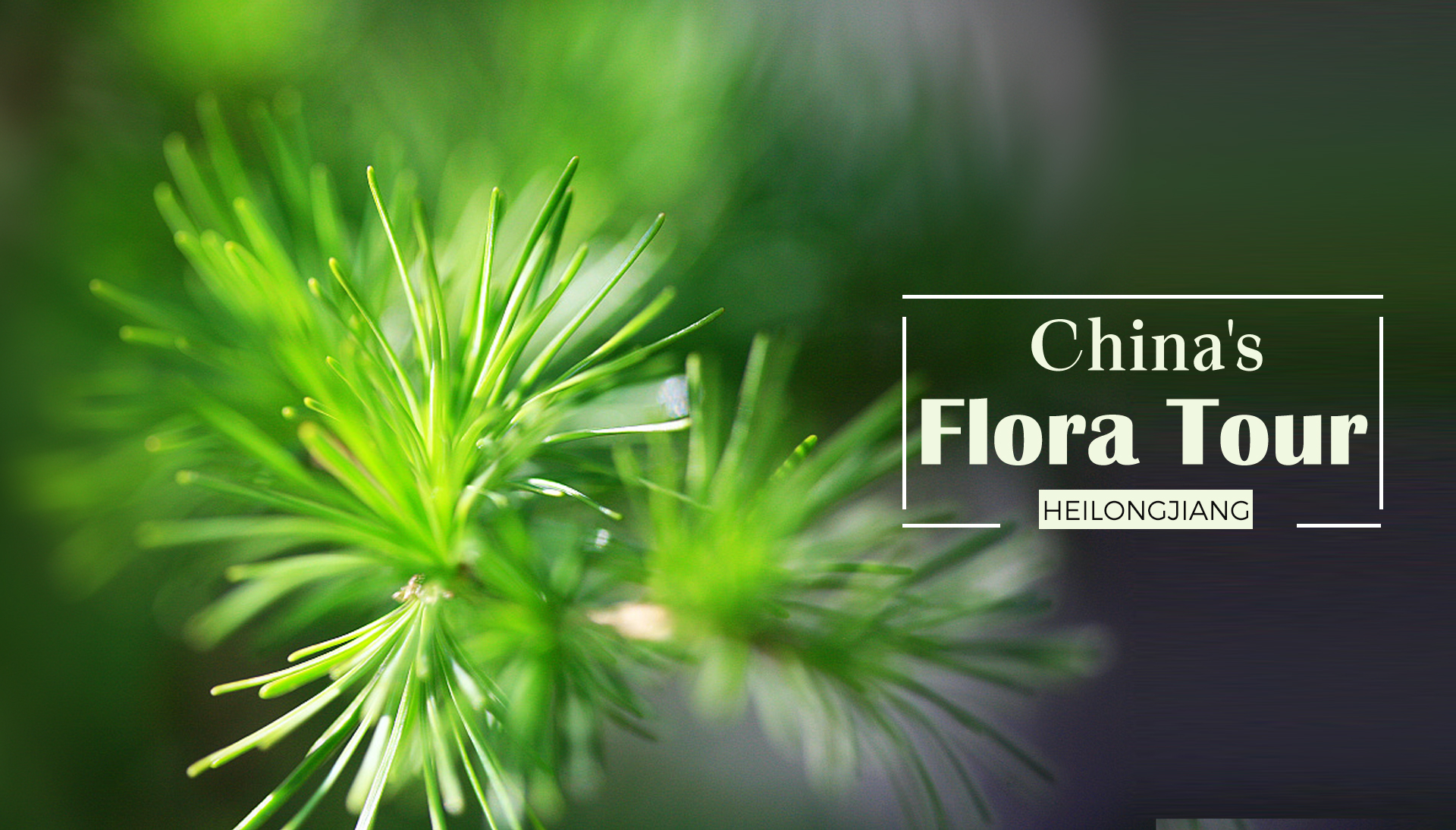
In the northernmost Chinese city of Mohe, you might catch a glimpse of Aurora if you are lucky. The city in northeast China's Heilongjiang Province is one of the few locations in the country with subarctic climate conditions, while the entire province also shares the chilly weather.

The larch forest covered with frost in the Great Hinggan Region, Heilongjiang Province. /VCG Photo
The larch forest covered with frost in the Great Hinggan Region, Heilongjiang Province. /VCG Photo
Similar to the "North" in popular fantasy-drama series "Game of Thrones," Heilongjiang has a long and bitter winter while spring is windy. Despite the harsh climate, the country's largest natural forest thrives here. The province is thus credited as the biggest supply base of timber in China.
The Dahurian larch develops needle-like leaves to endure the cold and dry weather. Unlike other evergreen pines, the leaves of Dahurian larch turn yellow and fall before winter, protecting it from frost and snow.
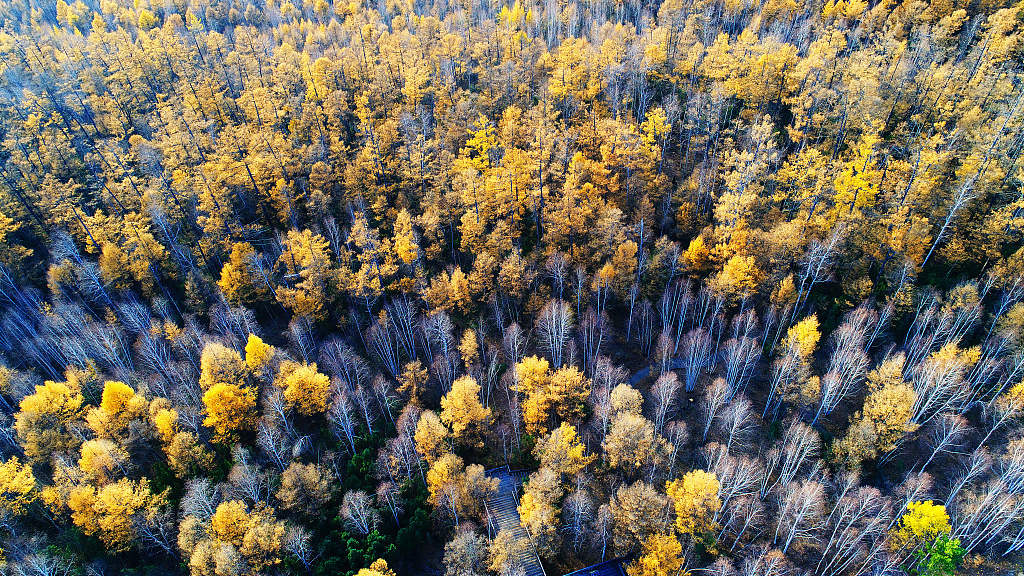
The larch and birch forest in autumn. /VCG Photo
The larch and birch forest in autumn. /VCG Photo
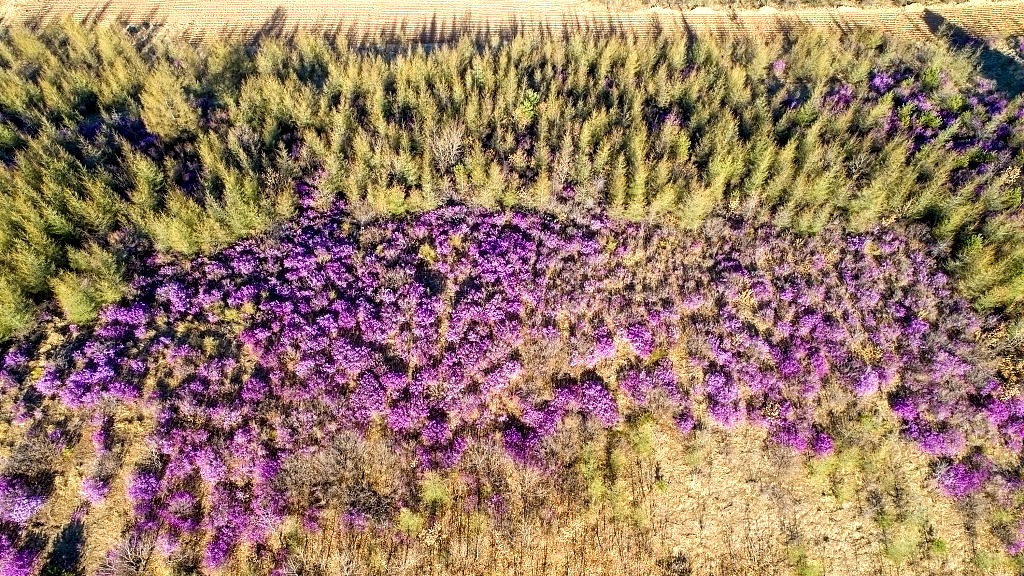
Dahurian rhododendron. /VCG Photo.
Dahurian rhododendron. /VCG Photo.
The larch can grow in any bare land and live up to 300 years. At its feet is Dahurian rhododendron. The pink-colored shurb that flourishes under matured trees can tolerate droughts and prevent water and soil erosion on cliffs and steep slopes.

Dahurian rhododendron blooms in the Great Khingan Region, Heilongjiang. /VCG Photo
Dahurian rhododendron blooms in the Great Khingan Region, Heilongjiang. /VCG Photo
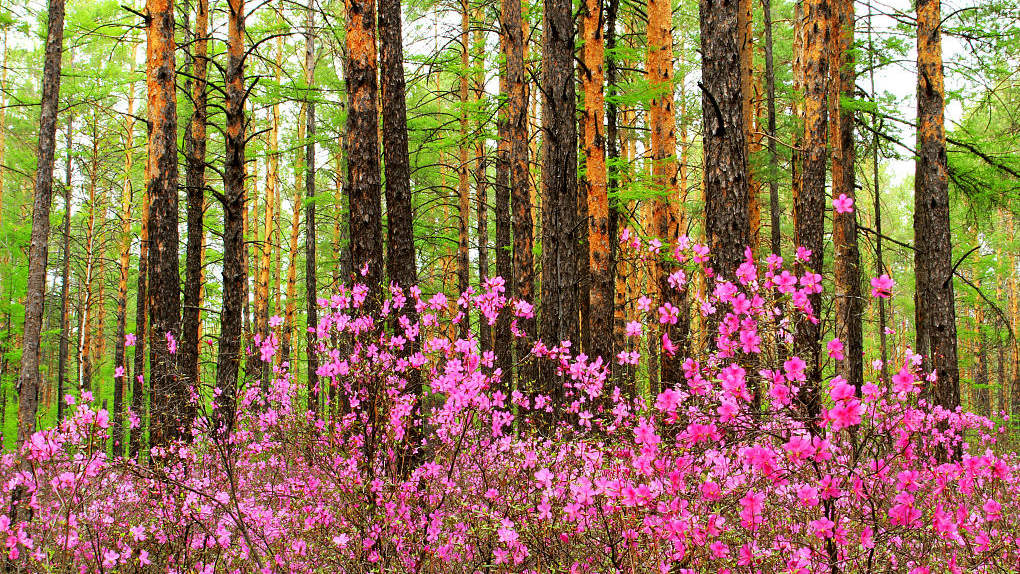
Dahurian rhododendron under Mongolian pines. /VCG Photo
Dahurian rhododendron under Mongolian pines. /VCG Photo
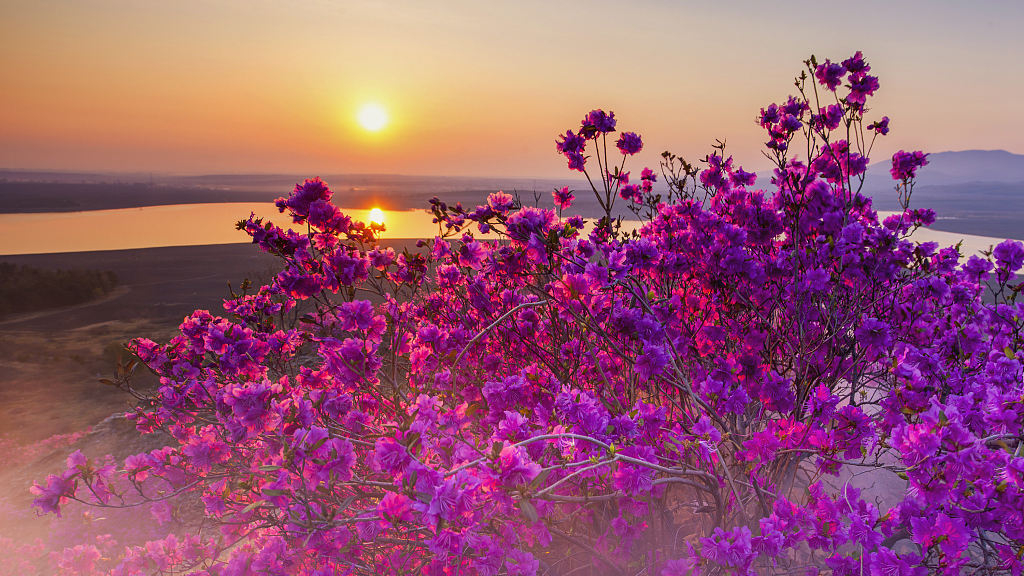
Dahurian rhododendron shines in the sunlight. /VCG Photo
Dahurian rhododendron shines in the sunlight. /VCG Photo
If you grate the leaves of Dahurian larch and Dahurian rhododendron, you will find their fragrance very similar. The leaves of Dahurian rhododendron can be used in making perfumes and medicines.
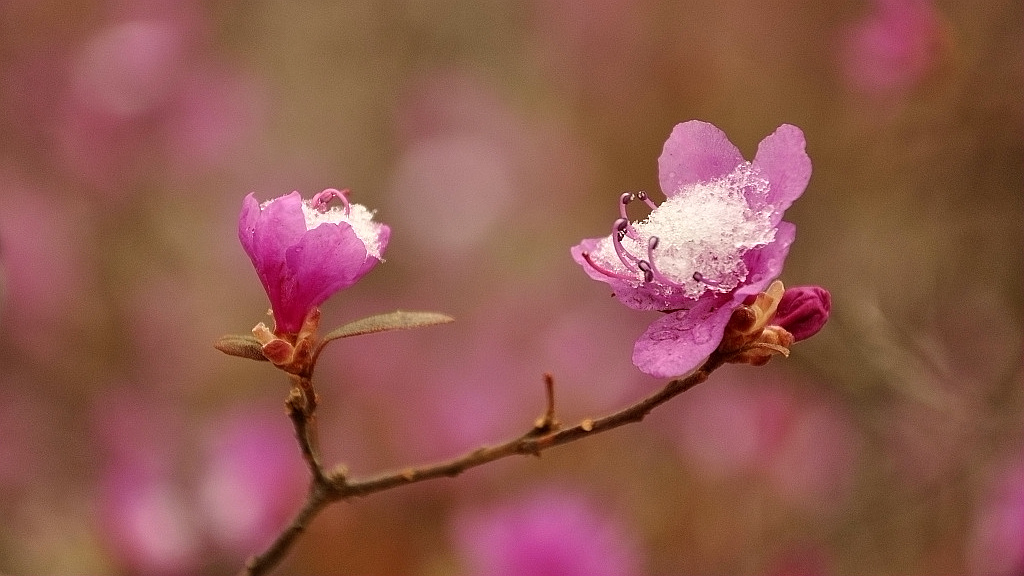
With snow. /VCG Photo
With snow. /VCG Photo
Unlike most rhododendron in southwestern mountainous areas, Dahurian rhododendron blooms in the alpine region every May. Its flowering period can prolong if it's overshadowed by tall trees such as various larches and pines.
When Dahurian larches get bald, Mongolian pines are still green. They together create a stunning view of the Great Khingan Region during winter.

The yellow larch forest and the evergreen Mongolian pine forest in Mohe. /VCG Photo
The yellow larch forest and the evergreen Mongolian pine forest in Mohe. /VCG Photo
Mongolian pine forests formed in China around 10,000 years ago. Just like their Siberian ancestor Scots pine, Mongolian pine has adapted well to the dry cold of Heilongjiang.
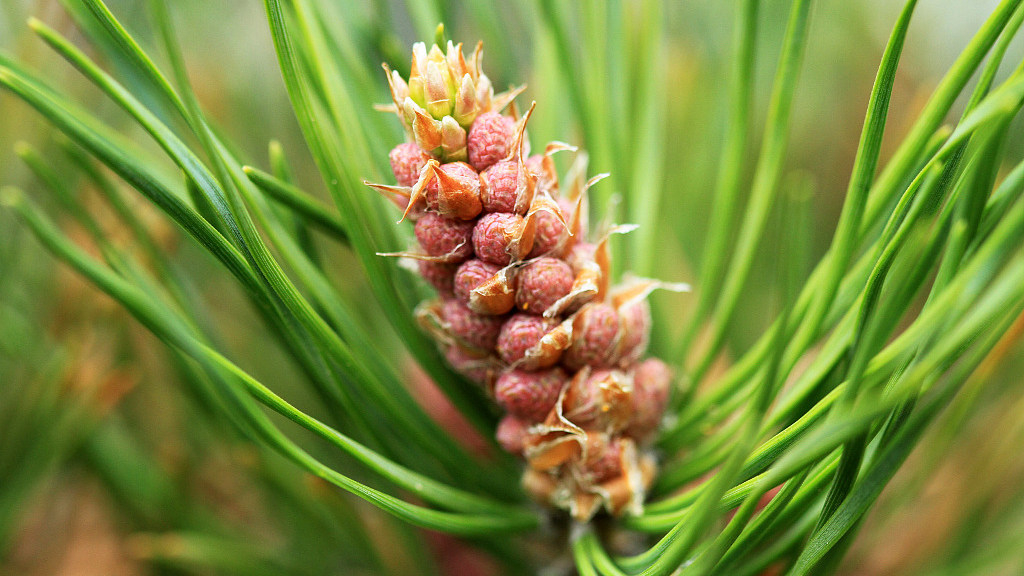
The stamen of a Mongolian pine. /VCG Photo
The stamen of a Mongolian pine. /VCG Photo
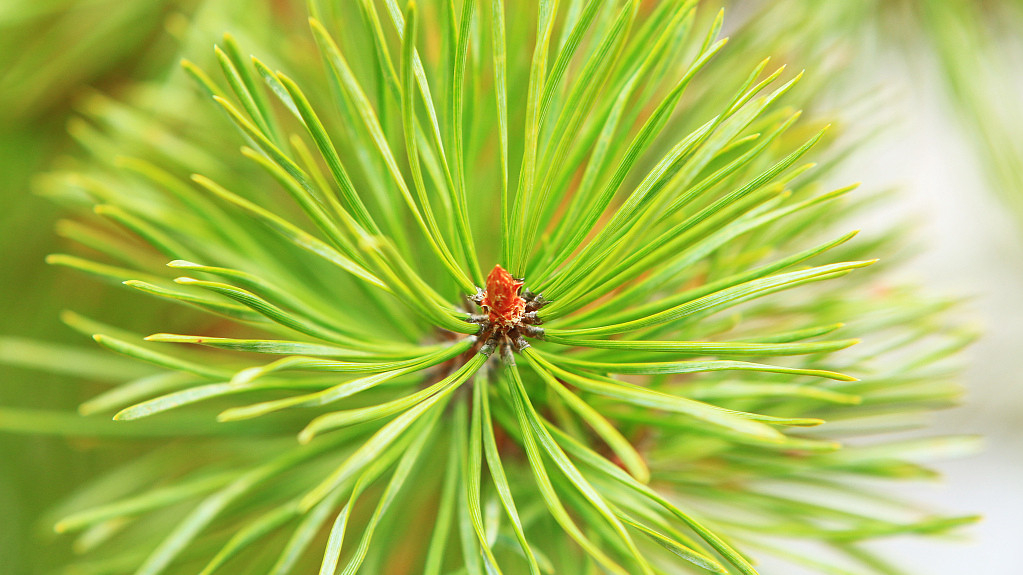
Mongolian pine. /VCG Photo
Mongolian pine. /VCG Photo
Fungi are great companions of Mongolian pines in their fight against droughts. Inconspicuous as they seem, fungi living on the roots of Mongolian pines can help the trees absorb more water through their well-developed hyphal network. In return, Mongolian pines would provide energy for fungi to survive.
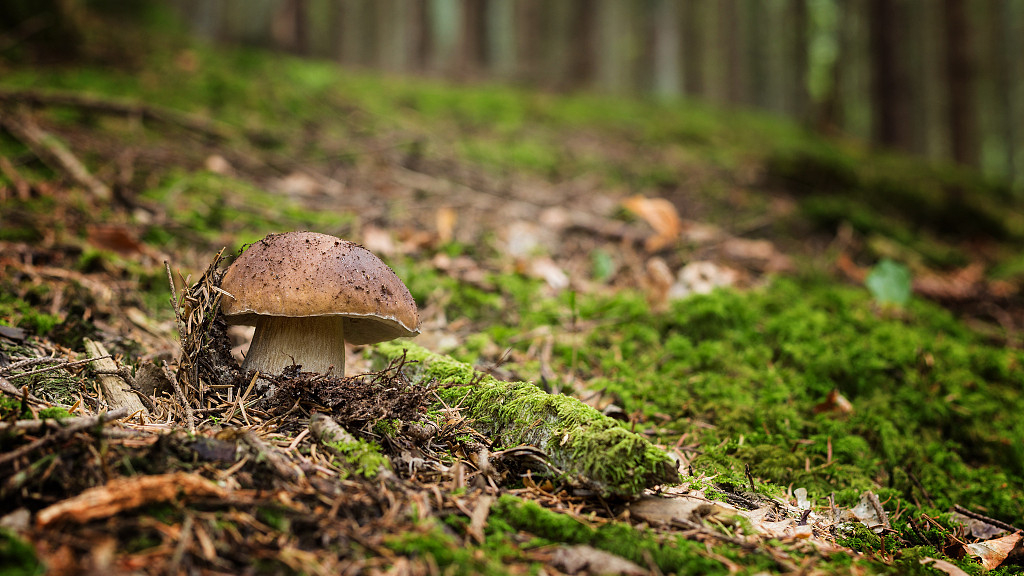
Fungus in the forest. /VCG Photo
Fungus in the forest. /VCG Photo
The unique climate and landform in Heilongjiang create its abundant wildlife. They develop various skills and make different alliances to adapt to the cold and dry weather, turning the place into a natural wonderland.
China's Flora Tour
From the wetlands along the east coast to the dense rainforest hidden in the west, China boasts an array of plant species. In this series, we will go on a tour to learn some of the most representative flora in different provinces and see how they live in harmony with the local geography and climate.
Read More:
(Cover image via VCG)
(If you want to contribute and have specific expertise, please contact us at nature@cgtn.com.)

SITEMAP
Copyright © 2018 CGTN. Beijing ICP prepared NO.16065310-3
Copyright © 2018 CGTN. Beijing ICP prepared NO.16065310-3